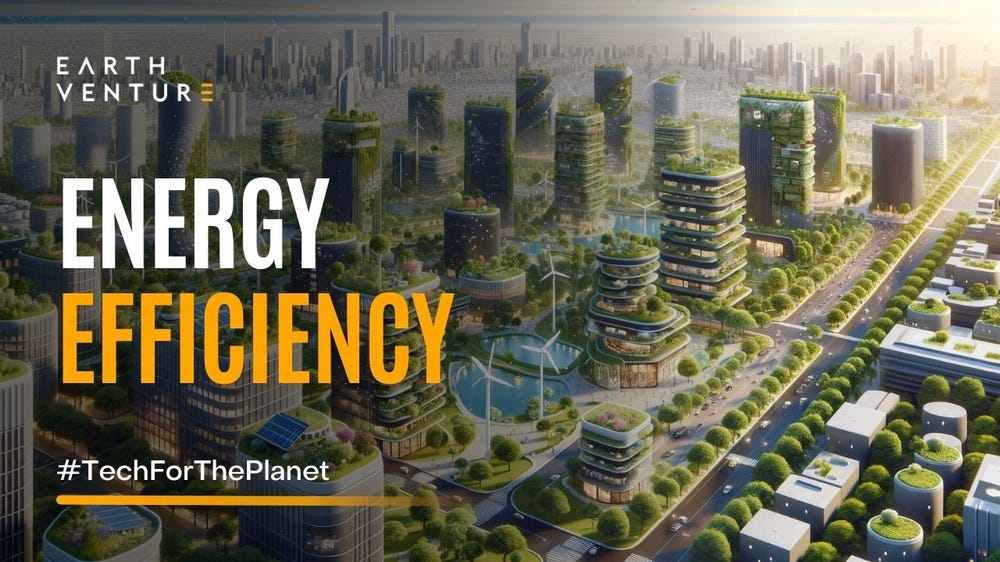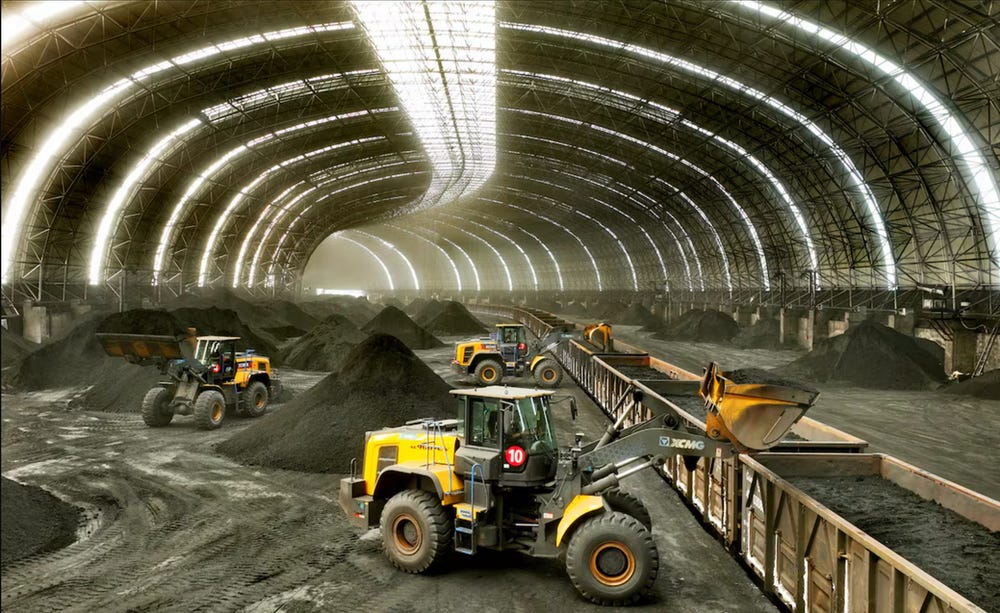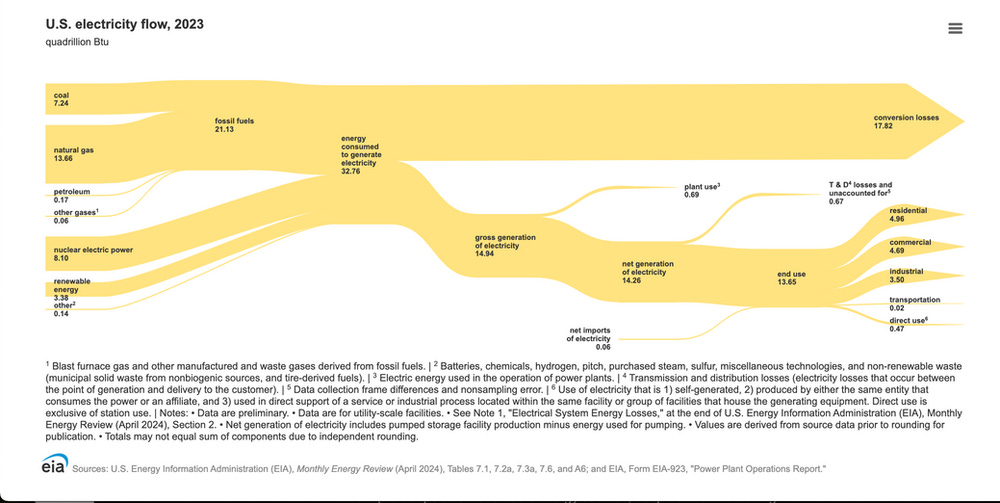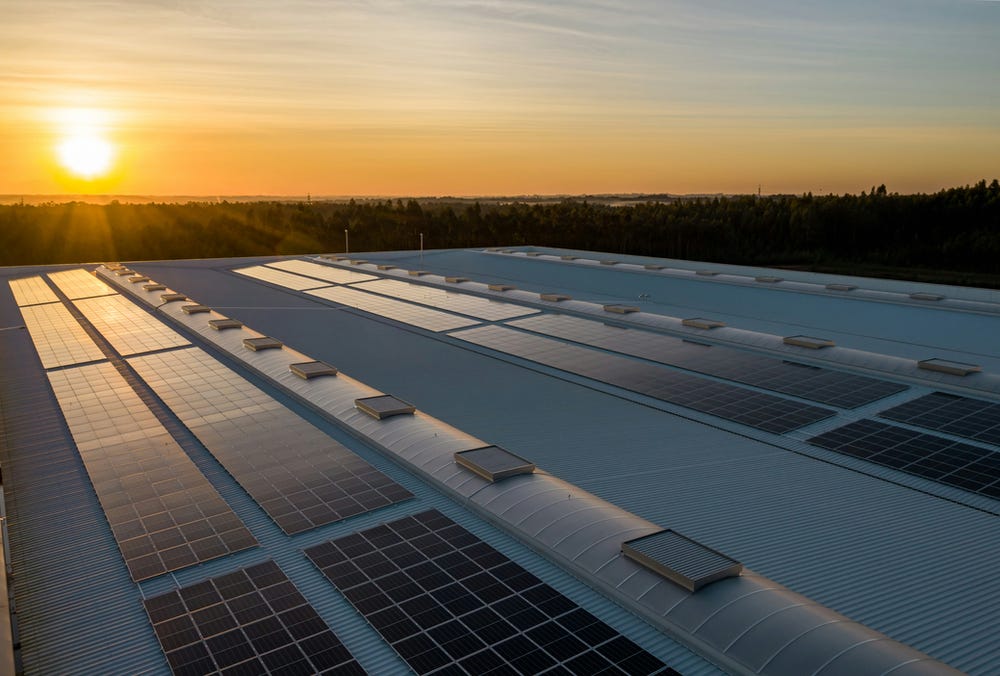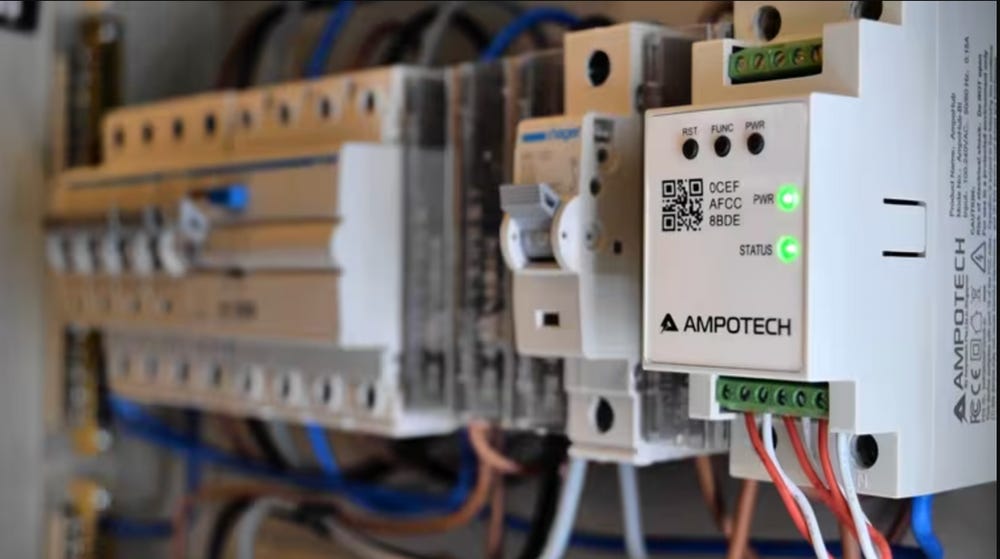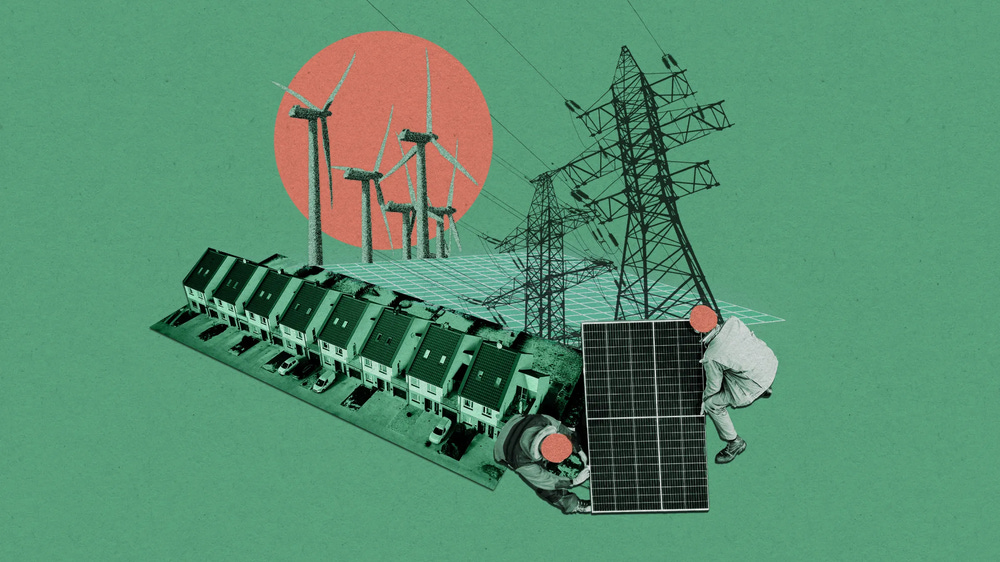#TechForThePlanet: Energy Efficiency - Revolutionize electrification with next-gen climate innovations
Introduction
In the pursuit of a future where clean energy fuels our economies, managing Energy efficiency stands out as a pivotal challenge, seeking innovative solutions that mitigate resource depletion while tackling climate change.
In the realm of Climate Tech, billions of capital (1) have been flowing into the energy sector, attracting field experts and entrepreneurs dedicated to driving impactful changes with green innovations in energy storage, digitalization, and low-carbon energy initiatives.
In this article, we will explore the intricacies of Energy efficiency, its significance for decarbonization, and how cutting-edge technologies are revolutionizing the field, bringing us closer to the full-scale energy transition.
Key Takeaway
Energy efficiency is crucial for minimizing waste and emissions, addressing climate change, and optimizing resource usage.
Conventional processes to generate energy face significant inefficiencies, with issues like grid overload and mismatched demand and supply, highlighting the need for innovative solutions.
Advanced technologies such as AI-enabled energy management, smart grids, and energy storage are revolutionizing efficiency and management in the sector.
Innovations like Ampotech’s AIoT Energy Management and Group14’s SCC55™ technology are pivotal in enhancing energy density, reducing emissions, and supporting the transition to a sustainable energy future.
What is Energy Efficiency and Why Does it Matter?
It's nearly impossible to imagine a world without electricity, the energy that powers our daily lives. From the AC that cools our rooms to the device you are using to read this article, energy is at the heart of modern life. However, the process of producing, delivering, and managing energy is complex and often inefficient. This is true for both conventional energy and the low-carbon energy transition.
The Definitions
In basic physics terms, the amount of energy usefully transferred in a system determines how efficient that system is. The more energy a device wastes, the less efficient it is.
Energy efficiency is all about optimizing energy usage with the minimum amount of waste. This includes the practices of using technology and taking monitoring measures to orchestrate the amount of energy required to provide products and services.
Modern clean tech practices involve upgrading to energy-efficient infrastructure, implement digitalisation for energy management systems, and using smart grids. These practices not only conserve energy but also reduce greenhouse gas emissions and lower operational costs, making them essential for the pursuit of sustainability.
Modern challenges facing the Energy sector
Despite the increasing recognition of the importance of energy efficiency, challenges persist. Inefficient systems and outdated infrastructure contribute to massive waste and GHG emissions, exacerbating climate change and resource depletion.
The emissions and cost of conventional Energy production
Despite recent advancements in renewable energy technologies, over 80% of global electricity is still generated from fossil fuels (2), contributing to substantial environmental costs. Traditional energy production methods, such as coal and natural gas power plants, with associated activities like extraction, transportation, and combustion, emit large quantities of greenhouse gasses, driving significant climate physical risks and causing adverse financial burdens.
However, transitioning to low-carbon energy sources is a complex challenge that requires substantial upfront investments. Renewable energy sources like solar and wind power are intermittent and can experience energy losses during transmission and conversion. For instance, energy losses in the grid can be as high as 8-15%, and inverter losses in solar power systems can range from 3-5% (3). These losses, combined with the need for significant initial investment, make balancing emissions reduction and energy production costs a critical challenge in achieving a sustainable energy transition
The Mismatch Demand and Supply
Since 2019, the U.S. has produced more energy than it consumes annually, highlighting a critical issue: energy efficiency.
In 2022, energy production hit 102.92 quads while consumption was only tipping at 100.41 quads (4). Yet, the EIA reports that up to 25% of electrical energy is lost during production and distribution. These losses have significant environmental impacts, as every unit of energy produced—whether from fossil fuels or renewables—carries an emission footprint.
Grid Infrastructure Overload
The rapid adoption of renewable energy sources, coupled with increasing electricity demand from electric vehicles, smart homes, and industrial automation systems has, unpredictably, exacerbated the strain on the grid. This overload manifests in several ways: aging grid components, insufficient capacity to handle peak loads, and limited flexibility to integrate variable renewable energy sources like solar and wind.
Modernizing the grid to handle these loads involves upgrading transmission lines, enhancing grid intelligence through digitalization, and deploying advanced energy storage solutions to balance supply and demand dynamically. These upgrades are necessary for the grid to avoid frequent outages and reduced reliability, which can undermine efforts to improve overall energy efficiency.
Emerging Innovations to Manage Energy Efficiency
The digitalization of industries has provoked its impact on the energy sectors in recent years. Many early-stage climate startups have begun to integrate modern technologies such as AI, machine learning, data analytics, and automation to find a better way to manage energy supply and distribution. Below are some of the prominent innovations that are attracting headlines within the industry.
Implement digitalization to manage efficiency
As we enter the era of advanced computing infrastructure and systems, AI and machine learning present opportunities to revolutionize sustainable solutions. One example is Ampotech's AIoT Energy Management, an innovative solution that leverages AI and IoT to provide real-time insights, identify inefficiencies, and automate energy-saving measures. This not only enhances sustainability but also drives cost savings and operational efficiency.
Through advanced data analytics and predictive algorithms, energy usage information gathered from Ampotech's system was communicated to building owners and operators, empowering them to make informed decisions and drive continuous improvement. From identifying energy-saving opportunities to optimizing Heating, Ventilation, and Air Conditioning (HVAC) systems, lighting, and appliances, Ampotech's platform delivers tangible results for both commercial and residential buildings, helping reduce emissions in the urban environment.
In a real-world application, Ampotech implemented its AIoT Energy Management system in a commercial office building in Singapore. By analyzing real-time data and providing actionable insights, the system identified that the building's lightning and HVAC system was running inefficiently during off-peak hours. After implementing Ampotech's recommendations, the building reduced its energy consumption by almost 20%, resulting in significant cost savings and emissions cuts. This case study exemplifies the potential of Ampotech's technology to drive energy efficiency and sustainability.
Save your energy for another day!
Storing energy is becoming a conventional issue, due to frequent fluctuations in energy demands and production. BloombergNEF predicts the global energy storage market will grow to 1,095 GW/2,850 GWh by 2040 (5). This trend set the stage for maximizing renewable energy use and reducing reliance on fossil fuels, making energy consumption more sustainable and efficient.
Despite the recent development of current energy storage solutions, lithium batteries show widespread adoption and market domination. However, the production of these batteries is still facing scaling challenges, due to expensive costs and limitations in capacity and lifespan.
One notable innovation in the realm of energy storage is Group14's SCC55™ technology, a flagship product that dramatically enhances the efficiency and performance of lithium batteries. SCC55™ is a silicon-carbon composite anode, a material with a unique structure, characterized by its hard carbon-based scaffolding that maintains silicon in an amorphous, nano-sized, and carbon-encased form, ensuring both stability and high performance.
With this breakthrough, Group14 technology boasts the capacity of traditional graphite anodes and provides up to 50% more energy density. This addresses a long-standing challenge in the battery industry, enabling the development of lithium batteries based on silicon anode with significantly higher energy density and faster charge times compared to conventional lithium-ion batteries.
The technology is also engineered to seamlessly integrate with existing battery manufacturing processes, offering a drop-in solution that can easily blend with battery energy storage systems for grid applications, and enhance the performance of consumer electronics, EVs, aerospace, and other mobility applications. By leveraging advanced manufacturing techniques at their Battery Active Materials (BAM) factory, Group14 can produce SCC55™ at a commercial scale, making it a viable and scalable solution for today's energy storage needs.
Easing energy distributing congestion with Smart Grids
Imagine an electricity grid that thinks and optimizes itself in real-time. These digitally enhanced grids use advanced metering, sensors, and communication networks to manage electricity distribution intelligently. According to the International Energy Agency (IEA), smart grids could save up to $20 billion annually by 2030 (6). They reduce outages, integrate renewables seamlessly, and ensure our energy systems are ready for the future, paving the way for a resilient and sustainable energy landscape.
The integration of AI and machine learning also allows predictive maintenance and real-time optimization, while IoT devices provide granular data for precise demand response strategies. These innovations represent a leap forward in smart grid capabilities, driving efficiency, reliability, and sustainability. Investing in these technologies promises substantial returns and a more resilient energy future.
Other emerging technologies also hold immense potential for the development of smart grids. Blockchain technology and quantum computing can solve complex optimization problems swiftly, improving energy distribution and load balancing. On the other hand, advanced energy storage systems, like solid-state and flow batteries, offer greater energy density and longer lifespans, stabilizing the grid during peak times.
Conclusion
Energy Efficiency is a cornerstone of sustainable development, offering transformative solutions to the challenges we face today. With energy prices decreasing to the pre-pandemic level from the 2022 peak (7), and global electricity demand is expected to rise at a faster rate over the next three years, growing by an average of 3.4% annually (8), driven by economic growth and increased electrification, there is no better time than now to act.
On the policy side, governments worldwide also implemented regulations and standards to promote energy efficiency. These include building codes, appliance standards, and industrial efficiency benchmarks. For example, in the European Union, the Energy Performance of Buildings Directive (EPBD) mandates energy performance standards for buildings. In Vietnam, Feed-in Tariff (FIT) programs like FIT 1 and FIT 2 have supported the development and implementation of solar farms, significantly boosting renewable energy adoption (9). These factors open up windows for development in the sectors.
By supporting innovation and promoting the adoption of breakthrough technologies, we can create a future where energy is produced without harming the planet, and resources are used efficiently. Through initiatives like Ampotech and Group14, Earth Venture Capital firmly believes in transformative deep tech solutions that tackle Energy efficiency, driving sustainability and resilience in the Energy sector, and supercharging the decarbonization pathway.





